European IT Spending and Staffing Benchmarks 2023/2024
Preparing a benchmark for IT spending or IT employee staffing levels can be a difficult exercise for any business. Our European IT Spending and Staffing Benchmarks study makes the job easier for IT executives in Europe by providing an IT spending framework with key ratios, statistics, and other IT cost metrics for strategic IT budget analytics. IT spending as a percent of revenue and other IT budget ratios are provided for selected industries and company sizes in Europe.
This study is a companion study to our annual IT Spending and Staffing Benchmarks study, which provides a full set of IT budgetary benchmarks and IT staffing metrics by industry sector and organizational size for private and public companies and for governmental organizations, based on our annual, in-depth survey of over 200 information technology executives. This companion study for Europe should be used in conjunction with our full study to provide insight into how high-level spending and staffing benchmarks differ for European organizations.

PURCHASE/DOWNLOAD: BY INDUSTRY AND ORGANIZATION SIZE
Clients: Log in and download, at no charge based on your access rights, from any link below.
Don’t Have Access? Click any link to see pricing and to purchase now.
Summary Chapters
Chapter 1: Executive Summary, Europe (Free Download)
Chapter 2: Composite Benchmarks, Europe
Chapter 3A: Benchmarks by Organization Size: Small, Europe
Chapter 3B: Benchmarks by Organization Size: Midsize, Europe
Chapter 3C: Benchmarks by Organization Size: Large, Europe
Industry Sector Benchmarks
Chapter 4: Process Manufacturing, Europe
Chapter 5: Discrete Manufacturing, Europe
Chapter 6: Banking and Finance, Europe
Chapter 7: Insurance, Europe
Chapter 8: Retail, Europe
Chapter 9: Wholesale Distribution, Europe
Chapter 10: Energy and Utilities, Europe
Chapter 11: Healthcare Services, Europe
Chapter 12: Professional and Technical Services, Europe
Chapter 13: Transportation and Logistics, Europe
Chapter 14: Construction and Trade Services, Europe
Chapter 15: IT Services and Solutions, Europe
Chapter 16: High-Tech Subsector, Europe
Chapter 17: Life Sciences Subsector, Europe
Chapter 18: Food and Beverage Subsector, Europe
Chapter 19: Chemicals Subsector, Europe
Chapter 20: Industrial and Automotive Subsector, Europe
Chapter 21: Brick and Mortar Retail Subsector, Europe
Chapter 22: Online Retail Subsector, Europe
Chapter 23: Professional Services Subsector, Europe
INTENDED AUDIENCE
For CIOs and consulting firms, this 38-chapter study provides key metrics and unbiased data for you to benchmark an organization’s total IT spending and staffing levels. This study will allow you to achieve the following outcomes:
-
- Benchmark your IT operational spending levels. Compare them with those of organizations of similar size and industry sector. Over 20 specific IT cost management ratios and other IT support metrics are provided, such as IT budget as a percent of revenue and IT budget per employee/user, allowing IT executives to highlight opportunities to reduce IT costs, optimize IT expenses, and improve the efficiency, effectiveness, and governance of the IT organization.
- Measure your IT capital budget spend levels. Nearly 20 specific IT capital budget metrics are provided to help stakeholders monitor IT investment levels relative to competitors.
- Manage your IT staffing levels. Over 30 IT head count ratios are provided for benchmarking IT staff counts, measuring IT worker productivity, and achieving efficiency within the IT department.
- Evaluate your IT key performance indicators (KPIs). Compare your IT intensity and infrastructure metrics with your peers, using measures such as percentage of the IT budget spending for running, growing, and transforming the business, custom/commercial software mix, users per network site and per printer, PCs per user, percentage of users with smartphones, data center OS mix, PC refresh rate, virtualization levels, outsourcing and managed services spending levels, use of cloud services, and other KPIs – all important factors in budgeting for IT.
For providers of IT products and services, this study provides valuable insights into the current IT budgeting priorities of corporate buyers and changes in levels of IT operational and capital spending. This study provides objective data based on our in-depth survey of IT decision makers. As such, it can be a valuable source of IT spending statistics to validate assumptions underlying IT solution provider business strategy, capabilities and competitive analysis, pricing strategies, and sales processes.
KEY METRICS DESCRIPTIONS
This section lists all the key metrics provided in the full report. All key metrics listed appear in Chapter 2 for the composite sample and in Chapters 3A, 3B, and 3C for small, midsize, and large organizations.
All key metrics are also provided in our industry sector and subsector chapters (Chapters 4–38), except those marked with an asterisk (*).
Demographics
In section 1, we describe the key characteristics of the sample to establish a basis for comparison with other IT organizations. These key metrics are as follows:
-
- Organization size demographics, including revenue, employees, revenue per employee, and revenue per user
- IT spending demographics, including total IT spending, IT capital spending, and IT outsourcing budget
- IT infrastructure demographics, including number of data centers, network sites, and business applications
- Key metrics of IT intensity, including ratio of users to employees, PCs per user, percentage of users with tablets, percentage of users with smartphones, users per network site, and percentage of application functionality from custom systems
IT Spending by Type
In section 2, we provide IT spending benchmarks by type of spending. These key metrics not only provide additional demographic information but also identify IT trends. They include:
-
- Percentage of IT spending devoted to ongoing support
- Percentage of IT budget spending for running, growing, and transforming the business
- Outsourcing as percentage of IT budget
- Percentage of IT spending outside IT budget
- Cloud/subscription software as a percentage of application portfolio (*)
Budgeting Priorities
In section 3, we examine key budget priorities for IT organizations. These key metrics include:
-
- Plans for IT outsourcing, showing the percentage of companies planning to increase, decrease, and maintain spending at about the same level (*)
- Spending priorities by IT initiative, showing the net percentage of organizations planning to increase spending on business process automation, cloud applications, cloud infrastructure, IT shared services, data analytics/business intelligence, disaster recovery/business continuity, legacy systems modernization, systems/data integration, data center automation, and digital transformation
- Spending priorities by budget area, showing the net percentage of organizations planning to increase spending on information security/privacy, IT personnel, business applications, data center, networking, and end-user technology (*)
- The importance of lowering costs vs. improving service levels in the coming year (*)
Total IT Spending Metrics
Section 4 presents key metrics for IT spending, which includes current-year IT operational and capital spending, but excludes depreciation. These key metrics include:
-
- Total IT spending as a percentage of revenue
- Total IT spending per user
- Total IT spending per PC
- Budget categories as average percentage of total IT spending, including spending on personnel, business applications, data center hardware/software, energy/utilities, IT facilities/floor space, cloud infrastructure, network infrastructure, IT security, voice/data carrier expenses, PCs/end-user devices, printers/printing, and other expenses
IT Operational Spending Metrics
Section 5 presents key metrics for IT operational spending. These key metrics are as follows:
-
- Percentage of organizations decreasing, maintaining, or increasing IT operational spending year over year (*)
- IT operational budget percentage change from previous year (*)
- Adequacy of current IT operational budget to support the business (*)
- IT operational spending as a percentage of revenue
- IT operational spending per user
- IT operational spending per PC
- Percentage of IT operational budget charged back to business units
- Budget categories as average percentage of IT operational spending, including spending on personnel, business applications, data center hardware/software, energy/utilities, IT facilities/floor space, cloud infrastructure, network infrastructure, IT security, voice/data carrier fees, PCs/end-user devices, printers/printing, and other expenses
- Personnel as a percentage of IT operational spending at the 25th percentile, median, and 75th percentile
- Depreciation as a percentage of IT operational budget
Spending Outside the IT Budget
Section 6 provides an analysis of spending that occurs outside of the IT budget and a discussion on how we account for non-IT spending that sometimes appears in the IT budget.
IT Operational Spending per Tower
Section 7 provides an analysis on IT operational spending per tower. These towers are aligned with the Technology Business Management (TBM) taxonomy. Metrics include the percentage of IT operational spending in the IT management tower, business applications tower, data center tower, network tower, end-user tower, security and compliance tower, and delivery tower.
Capital Spending Metrics
Section 8 provides an analysis of IT capital spending, including:
-
- Percentage of organizations decreasing, maintaining, or increasing IT capital spending (*)
- IT capital budget change from prior year (*)
- IT capital budget as a percentage of IT budget
- Budget categories as average percentage of IT capital spending, including spending on personnel, business applications, data center hardware/software, energy/utilities, IT facilities/floor space, cloud infrastructure, network infrastructure, IT security, voice/data carrier fees, PCs/end-user devices, printers/printing, and other expenses
IT Staffing Metrics
In section 9, we provide key metrics and trend data on IT staffing, including:
-
- Users per IT staff member
- Percentage of organizations increasing, maintaining, and decreasing IT staff levels from previous year (*)
- IT staff head count change from previous year (*)
- IT staff turnover
- Annual training allocation per IT employee
- Contingency workers as percentage of IT staff
- IT staff functions as average percentage of IT staff, including IT managers, IT finance/vendor management/procurement, project management, clerical/administrative support, application developers, business analysts, data management, quality assurance/testing, DevOps engineers, database administration, server support, network support, communications support, web/e-commerce, IT security, help desk (service desk), desktop support, documentation/training/process and standards, and other functions
Job Function Metrics
In section 10, we provide key benchmarks for seven job functions:
-
- IT managers as a percentage of IT staff (*)
- OS instances per server support staff member (*)
- Network devices per network support staff member (*)
- Applications per application developer (*)
- PCs per desktop support staff member (*)
- Users per help desk staff member (*)
- Help desk tickets per end-user support staff member
Service Area Spending Metrics
Section 11 shows IT spending benchmarks by service area as a percentage of total IT spending. The service areas are IT management, business applications, data center, network, end-user computing, and security and compliance.
Business Application Metrics
Section 12 provides business application metrics, including:
-
- Business application spending as percentage of IT operational spending
- Business application spending per user
Data Center Metrics
Section 13 covers these data center spending and infrastructure metrics:
-
- Processing workload by operating system, including IBM mainframe, Unix, Linux, IBM i (OS/400), Windows Server, and other
- Percentage of processing workloads by location: on-premises/data center, managed services providers, and public cloud
- Consolidated data center spending per user
- Consolidated data center spending per physical server (*)
- Data center hardware/software spending as a percentage of IT spending
- Data center hardware/software spending per user
- Energy/utilities as a percentage of IT spending (*)
- Energy/utilities spending per user
- Energy/utilities spending per physical server (*)
- Cloud infrastructure services as a percentage of data center spending (*)
- IT facilities/floor space as a percentage of IT spending (*)
- IT facilities/floor space spending per user (*)
- OS instances per physical server (*)
- Users per physical server (*)
Network Metrics
Section 14 covers the following network metrics:
-
- Consolidated network spending per user
- Network infrastructure as a percentage of IT spending
- Network infrastructure spending per user
- Network spending per network site
- IT security as a percentage of IT spending (*)
- IT security spending per user (*)
- Data/voice carrier spending as a percentage of IT spending (*)
- Data/voice carrier spending per user (*)
End-User Computing Metrics
Section 15 covers the following end-user metrics:
-
- Consolidated end-user technology spending per user
- PCs/end-user devices as a percentage of IT spending
- PCs/end-user device spending per user
- Printer/printing as a percentage of IT spending (*)
- Printer/printing spending per user (*)
- Users per printer (*)
EUROPEAN CHAPTER DESCRIPTIONS
Chapter 1: Executive Summary (Free Download)
This chapter provides an overview of the key findings from the European study and describes the contents of the subsequent chapters. It also includes information on the study participants and the survey methodology.
-
- IT Operational Budget Change from Prior Year: US and Canada vs. Europe
- Net Percentage Increasing IT Operational Spending
- IT Operational Spending Growth by Organization Size
- Adequacy of Current IT Operational Budget to Support the Business
- Total IT Spending as a Percentage of Revenue
- IT Operational Spending per User
- Change in IT Operational Budgets from Prior Year
- Percentage of Organizations Changing IT Capital Spending
- Capital Budget as a Percentage of IT Spending:
- Spending Priorities by IT Initiative
- Historical Cloud Subscription Rates
- Net Percentage of Organizations Increasing Spending
- Percentage of Organizations Changing IT Staff Head Count
- Historic Median Turnover
Chapter 2: Composite Benchmarks
This chapter provides composite metrics for all survey respondents across all sectors and organization sizes. The sample includes 101 organizations and is stratified by size and sector as described in the section on survey methodology. Respondents must have at least €50 million in annual revenue or IT spending in excess of €1 million and maintain at least some operations in Europe. There is no upper limit on the size of survey respondents.
Chapters 3A, 3B, and 3C: Benchmarks by Organization Size
In these chapters, we provide a complete set of benchmarks for organizations within the specified size classification. Benchmarks for small organizations are in Chapter 3A, for midsize organizations in Chapter 3B, and for large organizations in Chapter 3C. There are 102 respondents in the small-organization sample, 86 in the midsize sample, and 78 in the large sample. We define the size categories as follows:
Small organizations have IT operational budgets of less than €5 million.
Midsize organizations have IT operational budgets of €5 million to less than €25 million.
Large organizations have IT operational budgets of €25 million or greater.
Chapter 4: Process Manufacturing Sector Benchmarks
Chapter 4 provides benchmarks for process manufacturers. Process manufacturers are defined as those where the production process adds value by mixing, separating, forming, or chemical reaction. The sector includes manufacturers of chemicals, petrochemicals, semiconductors, pharmaceuticals, dietary supplements, food and beverage products, cosmetics, building materials, packaging materials, steel, glass, paper products, and other process-manufactured goods. The 47 respondents in the sample range in size from a minimum of about €65 million to a maximum of about €40 billion in annual revenue.
Chapter 5: Discrete Manufacturing Sector Benchmarks
Chapter 5 provides benchmarks for discrete manufacturing organizations. Discrete manufacturers are defined as those where the production process adds value by fabricating or assembling individual (discrete) unit production. The category includes manufacturers of consumer products, athletic equipment, industrial equipment, telecommunications equipment, aerospace products, furniture, auto parts, electrical parts, medical devices, and electronic devices, among other products. The 44 respondents in this sample range in size from a minimum of about €75 million to over €200 billion in annual revenue.
Chapter 6: Banking and Finance Sector Benchmarks
Chapter 6 provides benchmarks for banking and financial services companies. The firms in this sector include commercial banks, investment banks, mortgage lenders, consumer finance lenders, and other types of lenders and financial services providers. The 17 respondents in this sector range in size from a minimum of about €100 million to over €30 billion in annual sales.
Chapter 7: Insurance Sector Benchmarks
Chapter 7 provides benchmarks for insurance companies. The firms in this sector include companies that sell healthcare insurance, life insurance, property and casualty insurance, auto insurance, disability insurance, insurance marketplaces, and other types of insurance. The 15 respondents in this sector range in size from a minimum of about €60 million to over €8 billion in annual revenue.
Chapter 8: Retail Sector Benchmarks
Chapter 8 provides benchmarks for retailers. This sector includes retailers of clothing, jewelry, hardware, furniture, electronics, sports equipment, groceries, pharmaceuticals, and general merchandise. They include restaurant chains, department stores, luxury retail stores, electronics stores, furniture stores, pharmacies, sporting goods stores, and specialty retailers. We also include hospitality and consumer services in this sector. The 43 respondents in the sample range in size from about €90 million to over €30 billion in annual revenue.
Chapter 9: Wholesale Distribution Sector Benchmarks
Chapter 9 provides benchmarks for wholesale distributors. The category includes wholesale distributors of building products, home improvement products, auto parts, industrial components, fuel supply, electronics, food and beverage, pharmaceuticals, and other products. The 18 respondents in the sample range in size from a minimum of about €60 million to €30 billion in revenue.
Chapter 10: Energy and Utilities Sector Benchmarks
Chapter 10 provides benchmarks for public utilities, oil and gas producers, service companies, and midstream distributors across all organization sizes. The 18 respondents in this sector include public utilities (water, gas, and electric), regional utilities, integrated energy companies, natural gas companies, pipeline operators, and other energy and utilities companies. The companies in our sample range in size from a minimum of about €150 million to more than €100 billion in annual revenue.
Chapter 11: Healthcare Services Sector Benchmarks
Chapter 11 provides benchmarks for healthcare services companies. The 15 respondents in this sector include community hospital groups, national and regional hospital systems, healthcare systems, long-term care facilities, and other healthcare organizations. These organizations range in size from a minimum of about €50 million to over €15 billion in annual revenue.
Chapter 12: Professional and Technical Services Sector Benchmarks
Chapter 12 provides benchmarks for professional and technical services organizations. The 45 respondents in the sample range in size from a minimum of about €50 million to about €80 billion in annual revenue. The sector includes firms that provide professional and technical services, including engineering, legal, accounting, financial advice, consulting, marketing, research, and other services.
Chapter 13: Transportation and Logistics Sector Benchmarks
Chapter 13 provides benchmarks for the transportation and logistics sector. The 15 respondents in this sample range in size from a minimum of about €120 million to over €5 billion. The category includes organizations that operate buses, trucks, railways, airlines, barges, and ships. The sector also includes logistics companies that transport goods and transportation companies as well as regional and national transportation authorities that move people.
Chapter 14: Construction and Trade Services Sector Benchmarks
Chapter 14 provides benchmarks for construction and trade services companies. The 14 respondents in the sample range in size from about €60 million to over €20 billion in annual revenue. The category includes engineering and construction companies, commercial, residential, and industrial construction contractors, shipbuilders, specialty contractors, environmental services firms, and other construction and trade services firms.
Chapter 15: IT Services and Solutions Sector Benchmarks
Chapter 15 provides IT spending and staffing statistics for the IT services and solutions sector. The category includes software companies, software-as-a-service providers, systems integrators, IT solution providers, business process outsourcing firms, and other providers of technology services and solutions. There are 28 organizations in the sample, ranging in size from around €13 million to over €25 billion in annual revenue.
Chapter 16: High-Tech Subsector Benchmarks
Chapter 16 provides benchmarks for high-tech companies. The category includes computer products manufacturers, telecommunications equipment manufacturers, semiconductor manufacturers, aerospace and defense manufacturers, pharmaceutical makers, biotechnology product makers, software developers, software-as-a-service providers, and other high-tech companies. The 22 respondents in this sample range in size from a minimum of about €50 million to about €20 billion in revenue.
Chapter 17: Life Sciences Subsector Benchmarks
Chapter 17 provides benchmarks for life sciences companies. The category includes pharmaceutical makers, biotechnology product companies, and medical device manufacturers. The 16 respondents in this sample range in size from a minimum of about €50 million to about €40 billion in revenue.
Chapter 18: Food and Beverage Subsector Benchmarks
Chapter 18 provides benchmarks for food and beverage manufacturers. The 23 respondents in the sample range in size from €100 million to over €25 billion in annual revenue. Food and beverage companies produce beverages, meat products, seafood products, dairy products, dietary supplements, bakery ingredients, and other consumable food products. Some are suppliers to other food manufacturers or to the food service industry, while many also distribute consumer products to retailers or direct to consumers.
Chapter 19: Chemicals Subsector Benchmarks
Chapter 19 provides benchmarks for chemicals manufacturers. Chemicals manufacturers are by definition process manufacturers that produce chemical products. The sector includes manufacturers of chemicals, petrochemicals, and other chemical products. The 14 respondents in the sample range in size from a minimum of about €50 million to around €40 billion in annual revenue.
Chapter 20: Industrial and Automotive Subsector Benchmarks
Chapter 20 provides benchmarks for industrial and automotive manufacturers. The 20 respondents in this subsector make auto parts, material handling equipment, engines, machinery, vehicles, and similar capital goods. The manufacturers in the sample range in size from €120 million to over €250 billion in annual revenue.
Chapter 21: Brick and Mortar Retail Subsector Benchmarks
Chapter 21 provides benchmarks for brick and mortar retailers. This subsector includes department stores, clothing stores, convenience stores, pet stores, pharmacies, hardware stores, nonprofit retailers, furniture retailers, agricultural retailers, and other retailers. The 34 respondents in this sample have annual revenue ranging from about €95 million to over €25 billion.
Chapter 22: Online Retail Subsector Benchmarks
Chapter 22 provides benchmarks for online retailers. This subsector includes clothing retailers, home furnishing retailers, dietary supplements and health products retailers, agricultural retailers, pharmaceutical retailers, educational products retailers, sports equipment retailers, and other online retailers. The 15 respondents in this sample have annual revenue ranging from about €100 million to about €20 billion.
Chapter 23: Professional Services Subsector Benchmarks
Chapter 23 provides benchmarks for professional services organizations. The 31 respondents in the sample range in size from a minimum of about €50 million to over €50 billion in annual revenue. The sector includes firms that provide professional services, including legal, accounting, financial advice, consulting, marketing, and other services.
IT SPENDING AND STAFFING BENCHMARKING CONSULTING
Avasant Research not only publishes benchmarking metrics. We are also the leading provider of IT spending and staffing benchmarking services.
Looking for expert assistance in evaluating your IT spending and staffing levels or budgeting for IT? Our custom benchmarking consulting service provides an in-depth assessment of your organization’s IT spend ratios, comparing your key metrics against our database of peer organizations.
Contact us for pricing and a free sample of the benchmarking deliverable.








